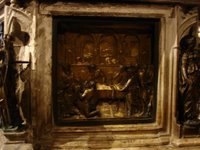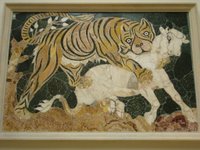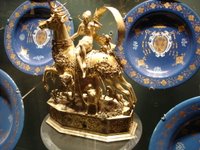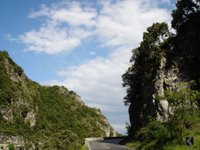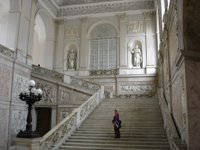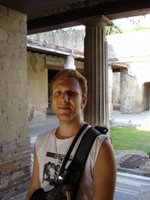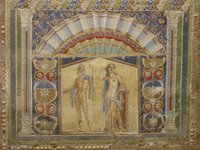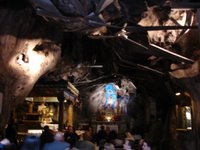 Finally found ourselves in the fabled Florence, the "flower" of Tuscany. Sadly it kind of smelt like a toilet, and was more like Naples than Rome. Still, it does have some of the best galleries and museums of which we managed to visit:
Finally found ourselves in the fabled Florence, the "flower" of Tuscany. Sadly it kind of smelt like a toilet, and was more like Naples than Rome. Still, it does have some of the best galleries and museums of which we managed to visit:
Brancacchi Chapel - Masaccio and Masolino's fresco cycle, unfortunately roped off and left in the dark because in anticipation of a religious ceremony that we reckon probably never took place.
Palazzo Medici Riccardi - home to the Medici family for 1,000 years it is also home to Benozzo Gozzoli's large fresco, The Adoration of the Magi.
Duomo - the famous church with its Brunelleschi dome looks much more impressive from outside. Inside the pickings are kind of slim, though there is a Vasari fresco and some stained glass by Ghiberti.
Campanile - Giotto's bell-tower stands beside the Dumo, and is decorated with sculptures by Andrea Pisano, Luca della Robbia and Donatello.
Baptistry - this has a wonderful medieval mosaic roof inside, but is more famous for its bronze doors, cast in bas-relief by Ghiberti. Called the "Gates of Paradise" by Michelangelo, and he'd know. There's also a set by Andrea Pisano, but noone cares.
 Opera dell Duomo Museum - all the original sculptures from the Duomo, Campanile and Baptistry are kept here as well as other superlative works by Michelangelo (his final Pieta) and Donatello (St John and Mary Magdalene).
Opera dell Duomo Museum - all the original sculptures from the Duomo, Campanile and Baptistry are kept here as well as other superlative works by Michelangelo (his final Pieta) and Donatello (St John and Mary Magdalene).
Ponte Vecchio - the oldest bridge in Florence, and home to the goldsmiths (since Duke Ferdinand I evicted the butchers in 1593). Anna saw a diamond watch for 160,000 Euros. :P
NZ WATCH: there was a boy waiting in line at the Academy with a silver fern sweatband, and a NZ school sports tour shirt on. Looked at me funny when I kept pointing out our kiwi. Foreigner or thicky? You decide!






